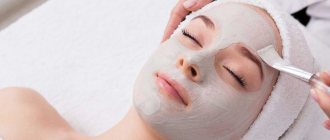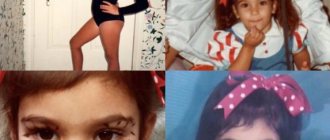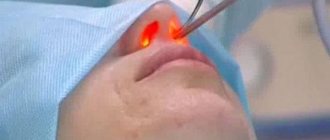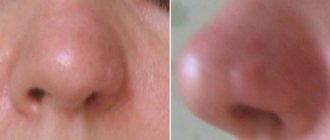Rhinoplasty is the most popular plastic surgery in Russia. Moreover, the leading position was secured for nose correction thanks to the southern regions. It used to be that rhinoplasty was most often performed by men, but in recent years the number of women applying has increased markedly, and the score has evened out. To evaluate why they undergo this operation, we suggest looking at the stars who corrected the shape of their nose. We invite you to vote on who it helped and who decided on plastic surgery in vain.
Victoria Lopyreva
The socialite also received an elegant nose as a result of rhinoplasty. The girl decided to have the operation already being the owner of the title “Miss Russia”.
If we still haven’t convinced you that external appearance does not depend on the shape of the nose, then take a look at the before and after photos of Blake Lively, Jennifer Lopez, Gwyneth Paltrow, Angelina Jolie, Christina Aguilera and Scarlett Johansson. All these actresses have undergone rhinoplasty in order to become even more attractive.
We thank our expert for preparing the material:
Alexander Vdovin , plastic surgeon at GLV Clinic, specialist in maxillofacial surgery
Examples of consequences after unsuccessful rhinoplasty
Aesthetic consequences
- The stitches do not heal. This is due to the individual characteristics of the body. If you know that you have slow tissue regeneration processes, it is better to inform your surgeon about this
- Swelling does not go away. Here the reason may be both in individual characteristics and in the skill of the surgeon. Another “X factor” is anesthesia. You can read more about this in my article.
- Nose too small. This happens because the surgeon removed too much tissue. But sometimes due to the fact that expectations do not match what is received
- The effect is too weak. Most often this is a psychological problem after rhinoplasty. When the patient thought that after rhinoplasty it would change dramatically, but in the end, aesthetic corrections simply made a beautiful nose. But they didn’t make the whole patient beautiful.
- It is clear that the nose is “made”. I also chalk this aesthetic problem up as a result of unsuccessful rhinoplasty. Because after plastic surgery the patient must “wear” a natural nose, not a doll one.
Contraindications
Any operation has contraindications if there are health problems. Plastic surgery is not performed if the patient has the following diseases and pathological conditions:
- oncology;
- diabetes mellitus;
- herpetic infection;
- severe pathologies of the heart, kidneys and liver;
- low blood clotting;
- hepatitis B and C.
There are also time restrictions for surgical intervention. These are inflammatory processes in the operated area, respiratory infections and exacerbations of chronic diseases. The operation is not performed on women during menstruation, pregnancy or breastfeeding.
Cost of the procedure
The price depends on the complexity of the operation, technique, type of anesthesia, equipment and medications used. There are other factors that influence pricing. The cost of the procedure in the capital’s clinics is higher than in most Russian regions. The services of a qualified surgeon who knows the original technique will cost more than the average specialist. And the primary operation will cost less than correction of unsuccessful surgery.
Failed rhinoplasty. Conclusions.
At the end of this article, I want to say that despite the scary stories described above, there is no need to be afraid. It is important to choose your surgeon, get confidence from him in the success of nose surgery and calmly prepare for life with a new nose. But if you are afraid to tremble. If the thought of rhinoplasty makes you break out in a cold sweat, consider whether it’s too early for you to have it. Because an operation is the work of at least two team members. Both the surgeon and the patient. Thank you for reading this article, you can ask me questions about rhinoplasty here.
Sources
- Dowlatshahi AS., Constantian MB., Deng A., Fudem G. Defining the Histologic Support Structures of the Nasal Ala and Soft Triangle: Toward Understanding the Cause of Iatrogenic Alar Retraction. // Plast Reconstr Surg - 2022 - Vol146 - N3 - p.283e-291e; PMID:32842101
- Kaplama ME., Ak S., Yukkaldiran A. Is Rhinoplasty Surgery a Risk Factor for Low Back Pain among Otorhinolaryngologists? // Facial Plast Surg - 2022 - Vol37 - N1 - p.102-106; PMID:32838440
- Schall JL., Rogers TL., Deschamps-Braly JC. Reprint of: Breaking the binary: The identification of trans-women in forensic anthropology. // Forensic Sci Int - 2022 - Vol314 - NNULL - p.110356; PMID:32758678
- Dey JK., Recker CA., Olson MD., Bowen AJ., Hamilton GS. Predicting Nasal Soft Tissue Envelope Thickness for Rhinoplasty: A Model Based on Visual Examination of the Nose. // Ann Otol Rhinol Laryngol - 2022 - Vol130 - N1 - p.60-66; PMID:32627568
- Rohrich RJ, Mohan R. Male Rhinoplasty: Update. // Plast Reconstr Surg - 2022 - Vol145 - N4 - p.744e-753e; PMID:32221209
- Schall JL., Rogers TL., Deschamps-Braly JC. Breaking the binary: The identification of trans-women in anthropological forensics. // Forensic Sci Int - 2022 - Vol309 - NNULL - p.110220; PMID:32200173
- Sykes JM., Dilger AE., Sinclair A. Surgical Facial Esthetics for Gender Affirmation. // Dermatol Clin - 2022 - Vol38 - N2 - p.261-268; PMID:32115136
- Borujeni LA., Pourmotabed S., Abdoli Z., Ghaderi H., Mahmoodnia L., Sedehi M., Hasanpour Dehkordi A. A Comparative Analysis of Patients' Quality of Life, Body Image and Self-confidence Before and After Aesthetic Rhinoplasty Surgery . // Aesthetic Plast Surg - 2020 - Vol44 - N2 - p.483-490; PMID:31832733
- Kim HJ., Lee SJ., Lee JH., Kim SH., Suh IS., Jeong HS. Clinical Features of Skin Infection After Rhinoplasty with Only Absorbable Thread (Polydioxanone) in Oriental Traditional Medicine: A Case Series Study. // Aesthetic Plast Surg - 2022 - Vol44 - N1 - p.139-147; PMID:31797043
- Parab SR., Khan MM. Do Aesthetic Average Nasal Parameters Matter For Rhinoplasty in India? // Indian J Otolaryngol Head Neck Surg - 2022 - Vol71 - NSuppl 3 - p.2011-2018; PMID:31763285
Biography
Natalya is from the Belarusian Mogilev. She has a twin sister, Julia. The girls were born on May 20, 1982. Their parents are people of non-creative professions: the director of an exhibition hall and a lawyer. Unlike her sister, Natalya showed creative talents from childhood. She happily performed in front of her parents, sang songs, read poems and posed in her mother’s outfits. The parents divorced, and the father soon had a son, Andrei.
At the age of nine, Natalya entered the Rainbow music club. Later, Podolskaya entered Studio W at the Mogilev Institute of Singing and Choreography. During her studies, the girl took part and won singing competitions for young performers.
Natalya dreamed of becoming a singer. But her parents saw her future connected with a more serious profession. Therefore, they insisted that their daughter enter the Institute of Law. The girl did not contradict them and entered the university chosen by her parents and graduated with honors.
Immediately after graduation, she leaves for Moscow and enters the Moscow Institute of Contemporary Art at the vocal department. She studied with Tamara Mansurova, who, noticing the girl’s talent, helped her in her career. Thanks to the help of the teacher, Natalya became a participant in “Universetalent Prague 2002” and “Slavic Bazaar”.
Podolskaya successfully built a career, but did not forget about her personal life. The singer's first common-law husband was Igor Kaminsky. Their relationship lasted about five years. In 2005, a loud scandal occurred between the lovers and they decided to break up.
Podolskaya was selected for Eurovision from Belarus in 2004, but did not make it. The same year she became a participant in the popular musical project “Star Factory”.
On the project she met producer Viktor Drobysh. Under his mentorship, Natalya recorded a video for his song, and later recorded an album, which included 13 tracks. Her album hit the TOP on the radio.
At “Star Factory 5” the performer took 3rd place.
After the show ended, Podolskaya performed at Eurovision from Russia, but took only 15th place. Later she took part in the “Great Races”, where she met her future husband Vladimir Presnyakov.
Their relationship began with friendship, which gradually grew into love. According to the celebrity, she realized at first glance that her future husband was sitting in front of her. Presnyakov was fascinated by the red-haired girl, but at that time he was married, so he decided to remain friends. But in the end he could not resist Natalya’s charm and began to court her.
The artists dated for a long time and lived in a civil marriage. They legalized their relationship only in 2010, and later got married. Two years earlier, Podolskaya received Russian citizenship.
Exactly ten years later, the woman gave her beloved son Artemy. They had long dreamed of adding to their family and, as they themselves admit, they literally begged God for a son. In 2022, their family was replenished again and little Ivan was born.
What is a snub nose?
The main sign of this defect is that the tip is directed upward. The ideal nasolabial angle is different for men and women. For men it should not exceed 95º, and for women from 95 to 115º.
An upturned nose is when this angle is higher than the specified norm. At the same time, the nostrils are very noticeable and the nose appears short. It happens that the problem is aggravated by the fact that the wings and its tip are significantly thickened. In this case, it visually appears not only wide, but also large. Outwardly, it may resemble a “heel”.
How can you fix a failed rhinoplasty?
The patient can understand that the nose job was unsuccessful no earlier than six months later. During this time, a recovery period passes, and the patient follows the doctor’s recommendations
Correction methods after rhinoplasty:
- A revision rhinoplasty can be performed by a plastic surgeon. It can be carried out either closed or open. But most often it is carried out using the open method. After all, a doctor’s capabilities are limited if there is a deficiency of skin, cartilage, and bone tissue.
- It is possible to carry out a correction that takes no more than half an hour. During correction, the surgeon carefully brings the shape to the required level. Recovery after correction is very fast.
- Correction with fillers or contouring. The procedure allows you to remove a hump, give the necessary angle, achieve symmetry, tighten the tip of the nose, and get rid of minor defects. Has a time-limited aesthetic effect. The result will last from a month to two years
Rehabilitation period
With proper preparation and adherence to the surgical technique, rehabilitation proceeds quickly and without complications. Patients may be bothered by minor swelling, hematomas and pain that go away on their own or after taking anti-inflammatory drugs. Sometimes mild swelling persists for 2–3 months, which is considered normal.
After the intervention, the patient must follow several rules:
- sleep on your back, leaning on a high pillow;
- protect the wound from contact with water for several days;
- for at least 3–4 weeks, avoid physical activity, visiting the sauna, bathhouse and solarium;
- stick to a diet, avoid spicy, salty and fatty foods.
Often, the doctor gives individual recommendations to consolidate the result and shorten the rehabilitation period. Changes in appearance can be assessed after 8–10 weeks, and the tip of the nose will take its final shape 6–12 months after surgery.
Functional consequences of unsuccessful rhinoplasty
- Labored breathing. This problem rarely occurs after, and more often before, surgery, but you still need to carefully monitor your breathing.
- Painful sensations. I will not expand on this issue, everything is clear here.
- Loss of smell. When you stop smelling, it's as if you have sinusitis.
Types of correction
There are many types of plastic surgery, depending on the physiological characteristics of the patient and the goals set. In particular, the wide tip is reduced by resection (excision of “extra” cartilage tissue) or in a more gentle way by suturing the pterygoid cartilages in the dome area. The problem of an upturned nose is solved by transplantation. To do this, the patient’s own cartilage tissue is used, which replenishes the volume in the problem area. In case of “bifurcation” of the columella, the right and left pterygoid cartilage in the area of the dome and medial crura are sutured.
The drooping tip is corrected using various techniques. For example, the lower fragment of the nasal septum and part of the pterygoid cartilage are excised, and then the remaining structures are brought together. An alternative method is tissue transplantation into the columella area. For transplantation, a miniature fragment of the auricle is usually taken.
The method of correction is determined by the surgeon after studying the patient’s problem. When choosing a technique, the doctor takes into account physiological characteristics: the general anatomy of the face, the density of cartilage tissue, the shape of the nostrils and nasal septum.










